OnePlus Pad Go review: going for affordable
OnePlus' stripped-back tablet delivers well for a cut of the original slate's price
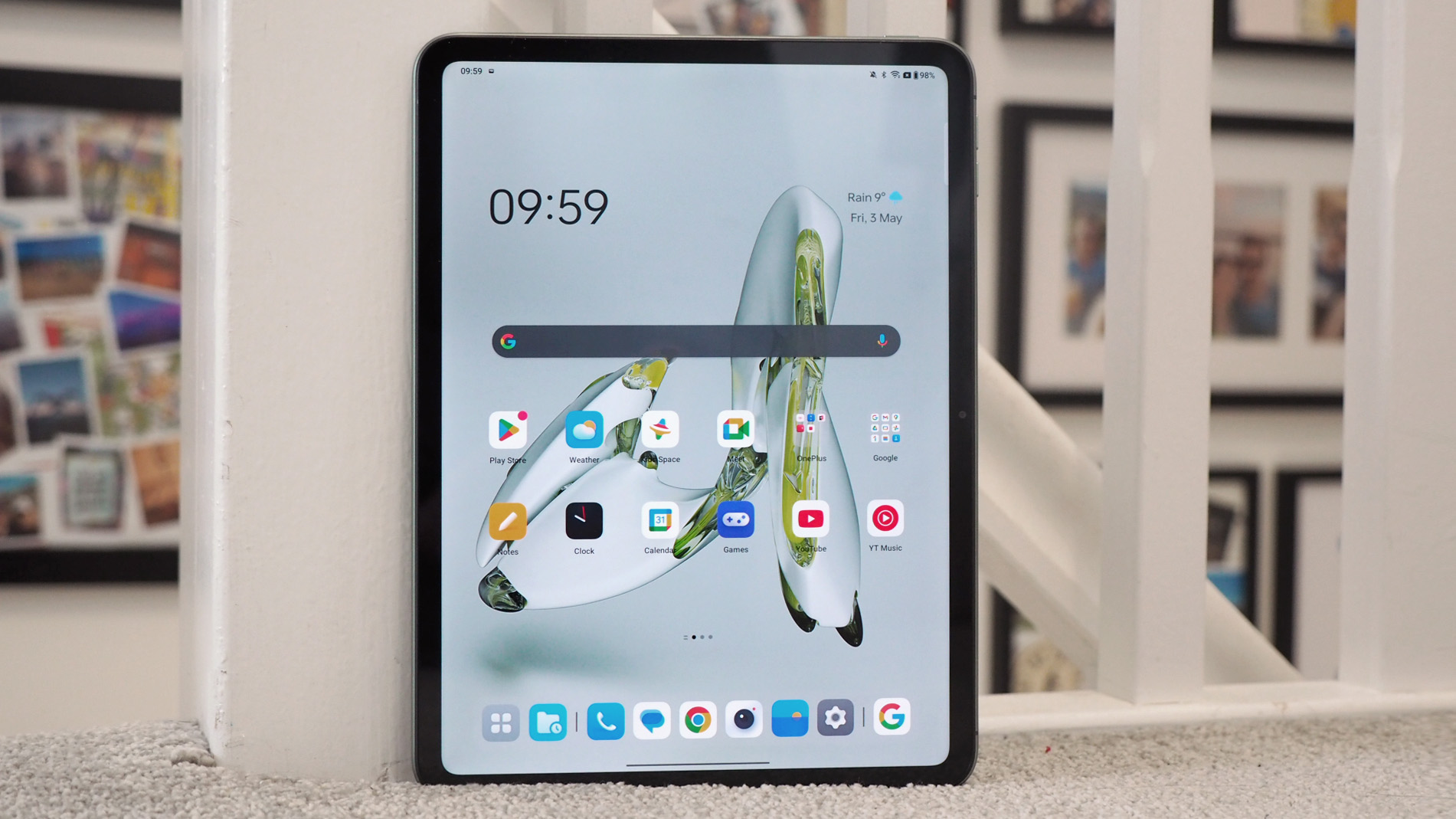
The OnePlus Pad Go is a capable mid-range tablet with an affordable asking price. Thing is, the original and more powerful OnePlus Pad isn't that much pricier, which can bring into question the need for both to exist. But if every penny counts then this stripped-back option doesn't make giant compromises to deliver on a decent performance with strong battery life.
-
+
MediaTek processor delivers solid performance
-
+
Cheaper than original OnePlus Pad
-
+
microSD card storage expansion
-
+
Wi-Fi and SIM connectivity
-
-
Rear camera is huge for such an average snapper
-
-
Close in price to original OnePlus Pad
-
-
Not the brightest screen ever
Why you can trust T3
OnePlus isn't a brand to do things by halves. Quite the opposite: it's a brand that prefers to do things by multiples. That's why, having already released the OnePlus Pad last year, there's now this, the stripped-back OnePlus Pad Go – aiming its sights at being among the best tablets that (a little less) money can buy.
The OnePlus Pad Go didn't initially launch in the UK, despite being available in other regions, so while it may seem as though I'm coming to this review late, I'm actually not. Indeed, I'm one of the first to obtain the tablet, having been to a OnePlus event in Finland for the company's Nordic Blue Watch 2 launch.
Having now lived with the OnePlus Pad Go for a couple of weeks, I'm in a strong position to reveal all the good, bad and other pointers about this new Android slate. Does it make sense in the market, especially given its price proximity to the original OnePlus Pad? Let's get to it.
OnePlus Pad Go: Price & Availability
The OnePlus Pad Go is available right now, directly from OnePlus' website, priced at £299 in the UK. At the time of writing it doesn't appear to be available in the USA or Australia.
However, it does seem to be discounted, with that RRP cut to an even lower £269. A welcome price point, especially as there's 20% off the original OnePlus Pad right now (down to £359), positioning the two fairly close in price terms.
OnePlus Pad Go v OnePlus Pad: What's different?
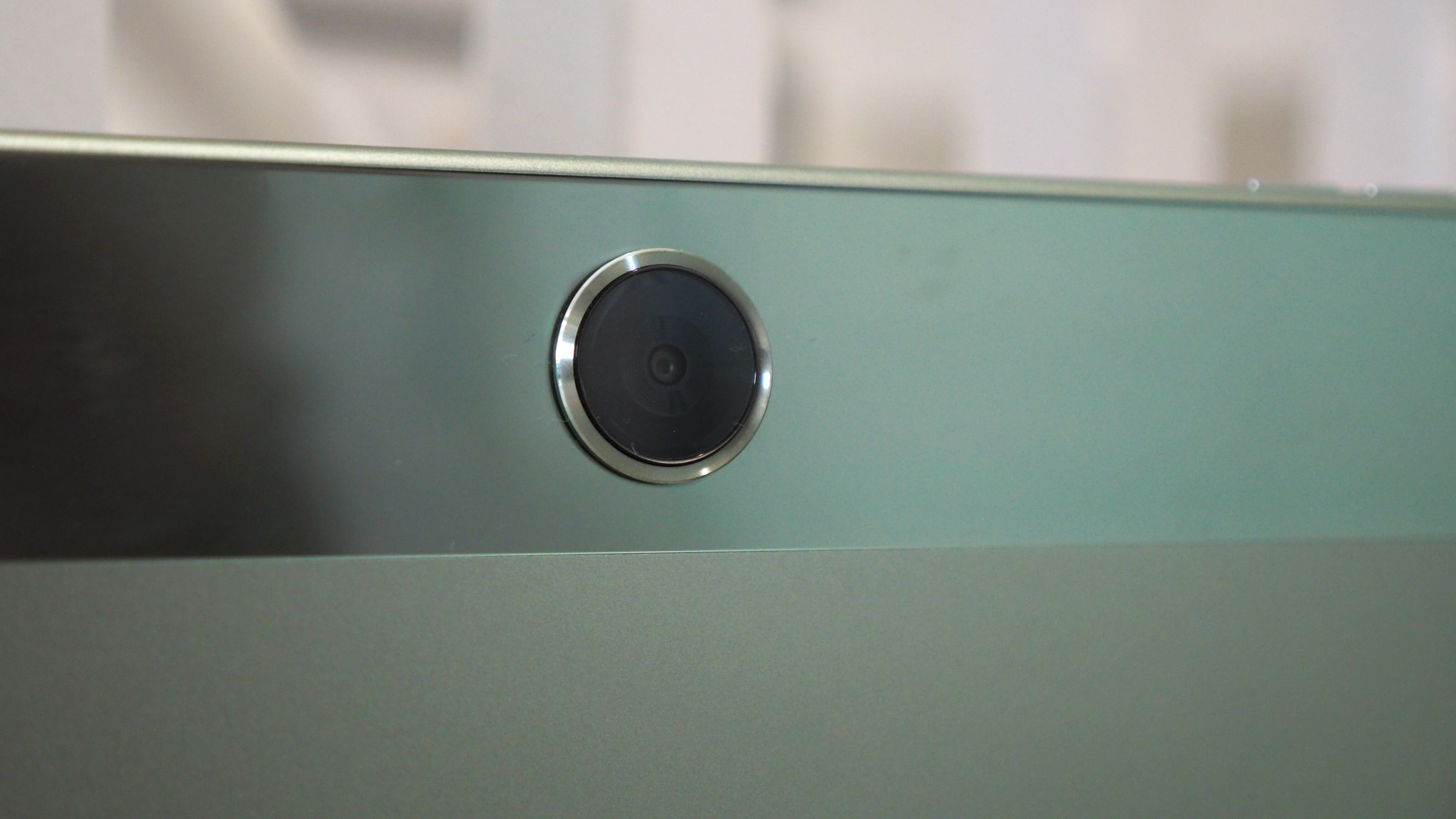
As there's not a gulf between the original OnePlus Pad and the OnePlus Pad Go, it's fair to question which you should buy out of the two and, indeed, what the key differences are.
Well, these are two different tablets, despite looks that are fundamentally similar in terms of design aesthetic. The Go is smaller, at 11.3-inches across the screen's diagonal, compared to the 11.61-inch panel of the original Pad.
Not only that, however, the Pad Go's display is less bright (400 versus 500 nits), less pixel-dense (260 versus 296ppi), and lower in refresh rate (90Hz max, not 144Hz at top-end). Both models feature LCD panels, however, so there's no OLED benefit between picking one or other.
Elsewhere the Pad Go's internals are also a step lower down the power scale, with a MediaTek Helio G99 chip compared to the original Pad's top-tier MediaTek Dimensity 9000 processor. Both feature 8GB RAM (although the Go's is a little less speedy).
In the Go's favour is a microSD card slot as part of its SIM try – that's something the original Pad lacks. That makes it nice and easy to expand storage on the cheap, if you intend on filling your tablet with stacks of content – whether downloads from the best streaming services, or your own files.
OnePlus Pad Go review: Design & Display
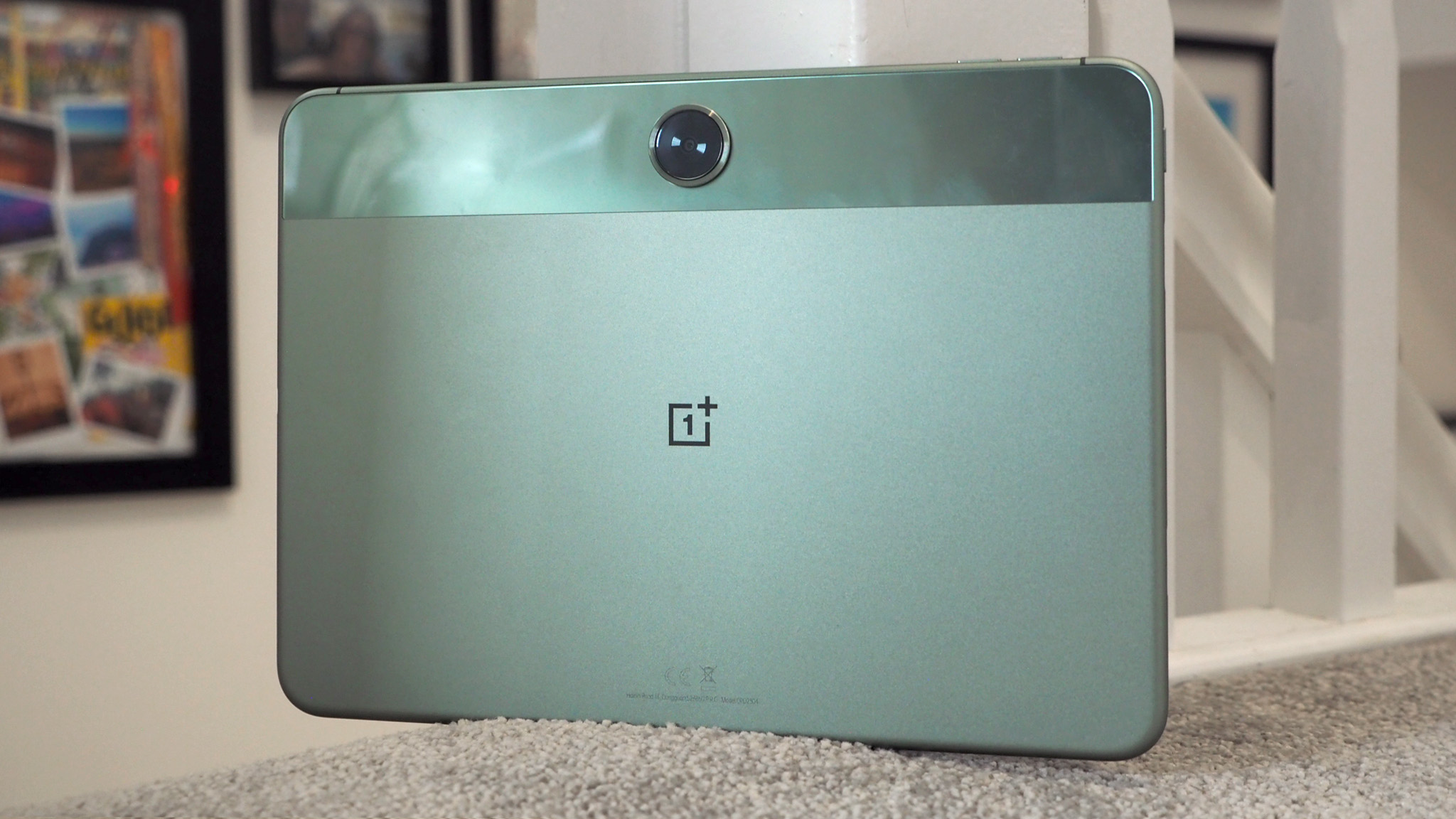
As I say, the OnePlus Pad Go echoes the original OnePlus Pad in terms of visual aesthetic. That means it's available in a very OnePlus green shade only, no basic black or white to be found here. It feels solidly built and sturdy, weighing 532g.
The Go has a smooth top bar section to its rear, giving a different visual and textural finish compared to the original Pad's circular-etched panel. It's a bit of a fingerprint magnet, though, so doesn't really add any distinct benefit that I can think of.
Protruding centrally from that rear is a large single camera unit. I find it feels most peculiar in its placement – sometimes slightly in the way, my hands getting to it by accident. This is also a tablet, let's not forget, so such a prominent – and, frankly, average-performing – camera on the rear doesn't strike me as needed.
At 6.89mm thick, the Pad Go is commendably slim, much like one of the best phones you can buy today. Except, contrary to that, it's also nothing like a phone because of its 7:5 aspect ratio display. That's close to an A4 sheet in terms of aspect (despite the tablet's footprint being notably smaller than a piece of paper, at 255x188mm).

There are all sorts of screen aspect ratios on the market today. The most typical is 19.5:9 for phones (but some are 'longer', with 21:9). Tablets also vary, with the likes of Samsung's Galaxy Tab S9 Ultra opting for a 16:10 (so better designed for movie streaming) and Apple's iPad an echo of old CRT TVs, at 4:3 aspect.
The OnePlus Pad Go therefore sits somewhere in between all entries in that spectrum: it's pretty good for upsized games, reveals a bit too much border for movie streaming, and if anything is closer to a work-oriented panel (given that A4 paper ratio similarity). The OnePlus Magnetic Keyboard also is not compatible according to OnePlus' site (I queried this with the brand, which confirmed it's not possible owed to lack of three-pin connector).
I've dabbled in emails, playing games (from South Park: Phone Destroyer to Match Factory) and have found this 2408 x 1720 resolution panel perfectly capable. It's not as bright as the best Android phones on the market, though, which I have noticed – the potential 25% brightness bonus from the original Pad is a clear benefit compared to this Go model.
OnePlus Pad Go review: Performance & Battery
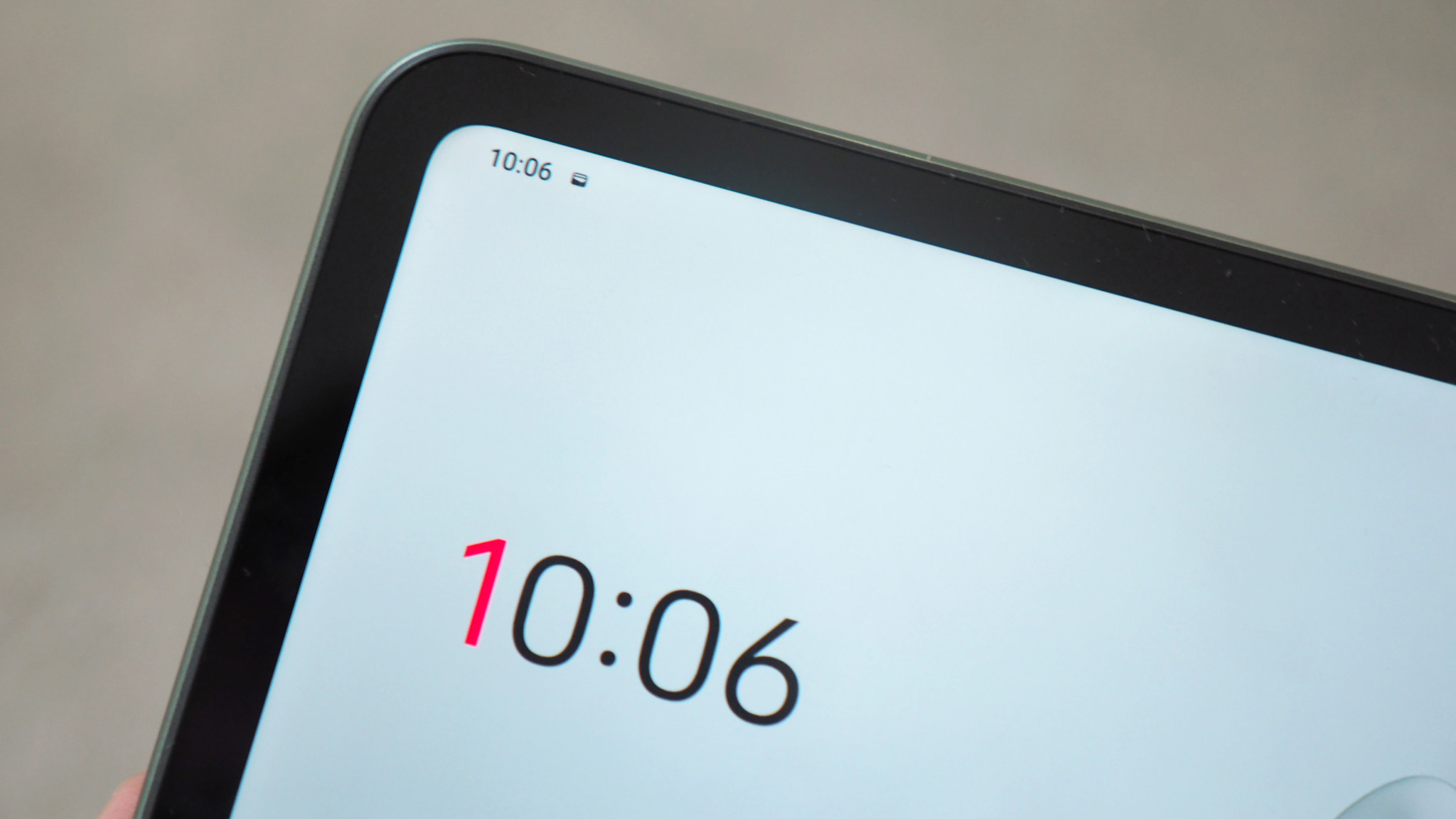
Given the MediaTek Helio G99 chip inside, I wasn't expecting much from this tablet, truth be told. Yet, here I am, eating my own words, as the performance while gaming exceeds what I've experienced from the Samsung Galaxy A55 mid-range phone, for example.
That has meant I've been able to play games such as Match Factory without stuttering, which is a problem the Samsung's Exynos processor couldn't evade. Sure, the OnePlus Pad Go panel's frame-rate might not be the best it possibly can be – and let's not forget the 90Hz here is easily bettered elsewhere in the market – but it delivers well enough.
When it comes to multi-tasking, the 8GB RAM on board here means that's possible too. A simple two-finger downward swipe and a landscape-orientated screen will split in two, allowing compatible apps to be shown side-by-side. Not all apps are compatible, though, and it's a little choppy for this multi-tasking setup – but, at this price, it's not pretending to be a flagship, so I think it handles itself well.
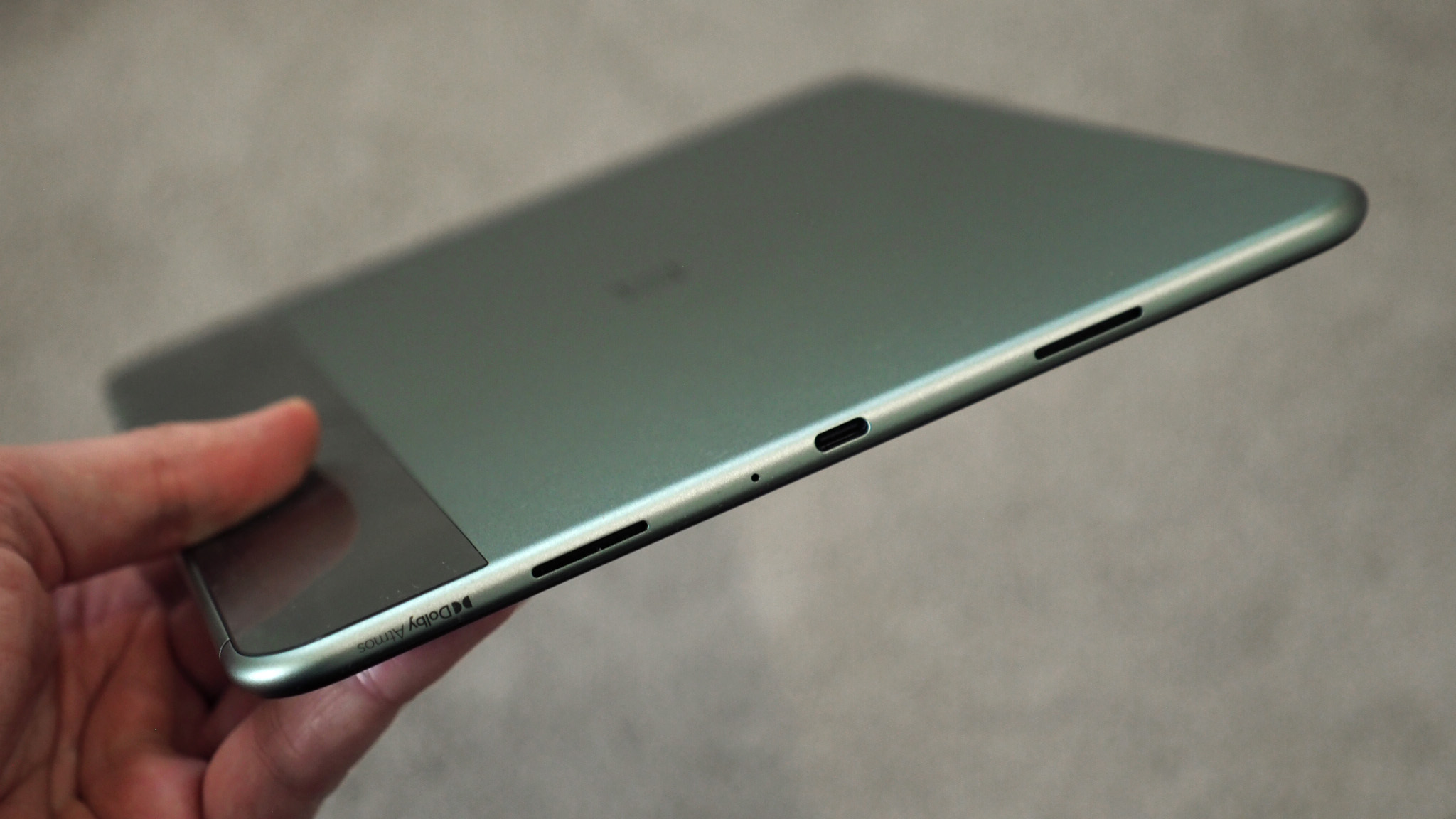
With an 8000mAh battery on board, the Pad Go's capacity is lower than the original Pad's equivalent (9350mAh), but the smaller screen here means that, pixel for pixel, you're looking at similar longevity. I've found when being away for long weekends without that tablet that it's able to hold charge really well – which is great for a tablet product.
The 33W charging is fair but not amazing (the original Pad delivers double, at 67W), not that you'll need to charge often. As I don't use tablets in the same way as phones, I've been getting multi-day battery life from the Pad Go – an ideal amount to dip in and out as pleased. My battery test saw it lose around 9% per hour when streaming, so you'd easily get a non-stop 11 hours of use – likely more from pre-downloaded content (putting it close with OnePlus' official 14 hours claim).
Oh, and as this is a tablet review and I really don't see a great need for rear cameras on such devices, I can only double down on my dismay at the massive and protruding camera on the rear of this tablet. It just feels unnecessary – especially for an average 8-megapixel snapper (it's even lower resolution than the original Pad's 13MP one!).
OnePlus Pad Go review: Verdict
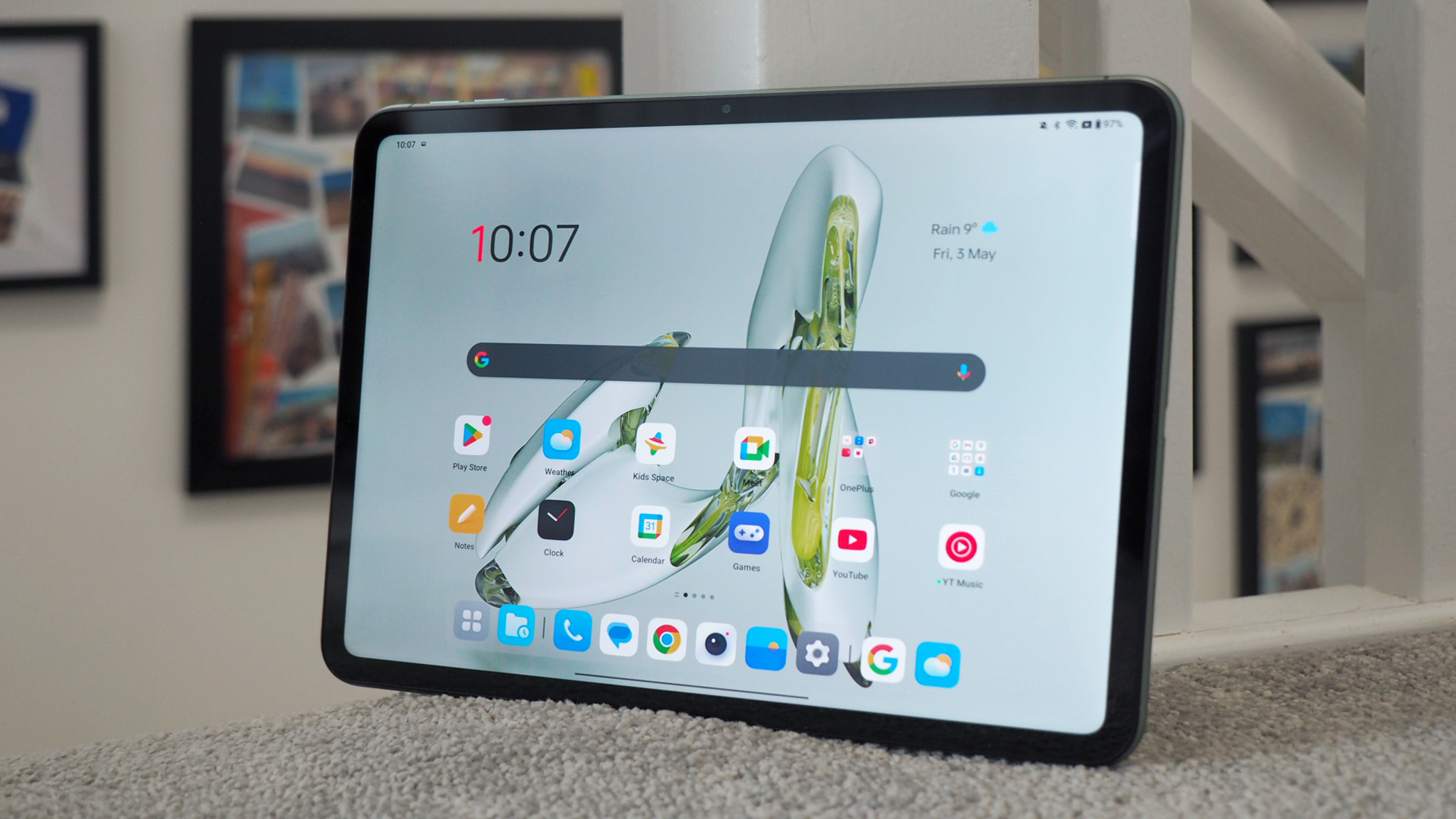
When a colleague reviewed the original OnePlus Pad, he called it "the iPad of the Android world". Although that was mainly because it has a more iPad-like aspect ratio compared to much of the Android tablet competition.
The OnePlus Pad Go, meanwhile, doesn't deviate hugely from that sentiment – it's just a mite smaller, a little cheaper, and has pared down some of the features and inherent power to fit into its lower price point.
Thing is, the price isn't hugely different from the original OnePlus Pad – which does have me questioning the true need for the Go to exist. But as I said up top: OnePlus does things by multiples, not halves, so it's no surprise to see the Go appear on these shores as a purchase option.
Besides, while the performance isn't flagship and Android still can't offer Apple levels of multi-tasking performance, I've had better performance from this OnePlus tablet than I've found from a pricier Samsung Galaxy A55 phone. Which only goes to show: the OnePlus Pad Go is capable of a capable performer for an appealing price.
Also consider
At the time of writing, you can buy the original OnePlus Pad for £90 more than the Pad Go. Admittedly that's an additional third on the Go's discounted asking price, but that will net you more power, a larger screen, faster refresh rate, and more. It's the sensible option if you have bigger demands from your tablet needs.
Otherwise, for a totally different prospect, take a look at Samsung's range, which have more movie-aligned aspect ratios (16:10), and arguably better software. The Galaxy Tab S9 FE+ is the latest, but it's a fair bit pricier.
Or, if you can cope with ditching Android altogether, then Apple's iPad and iPad Air are two very capable options that are more adept for work scenarios than Android tablets can currently compete with.
Sign up to the T3 newsletter for smarter living straight to your inbox
Get all the latest news, reviews, deals and buying guides on gorgeous tech, home and active products from the T3 experts

Mike is T3's Tech Editor. He's been writing about consumer technology for 15 years and his beat covers phones – of which he's seen hundreds of handsets over the years – laptops, gaming, TV & audio, and more. There's little consumer tech he's not had a hand at trying, and with extensive commissioning and editing experience, he knows the industry inside out. As the former Reviews Editor at Pocket-lint for 10 years where he furthered his knowledge and expertise, whilst writing about literally thousands of products, he's also provided work for publications such as Wired, The Guardian, Metro, and more.
-
 The Range Rover Electric will have a bigger battery than most other EVs
The Range Rover Electric will have a bigger battery than most other EVsWe just learnt some fresh details about the all-electric Range Rover
By Alistair Charlton Published
-
 Dreame’s pocket-sized hair dryer is your carry-on’s new best friend
Dreame’s pocket-sized hair dryer is your carry-on’s new best friendThis is one impressive little styler!
By Lizzie Wilmot Published
-
 Netflix's new series looks like The Queen's Game crossed with Naruto – in the best way
Netflix's new series looks like The Queen's Game crossed with Naruto – in the best wayNetflix brings another manga to the screen
By Max Freeman-Mills Published